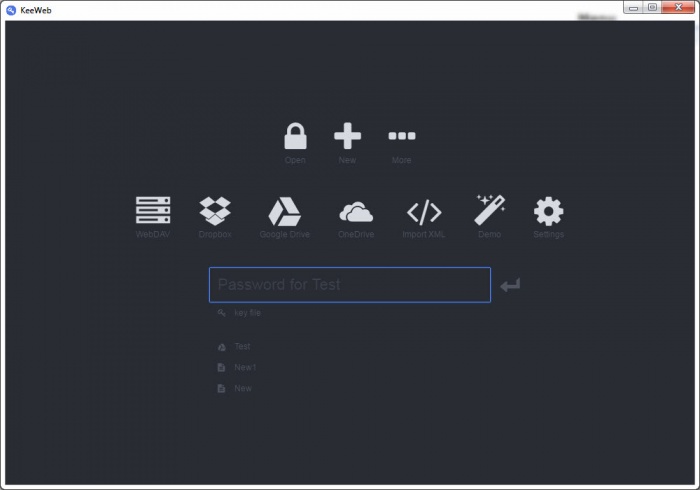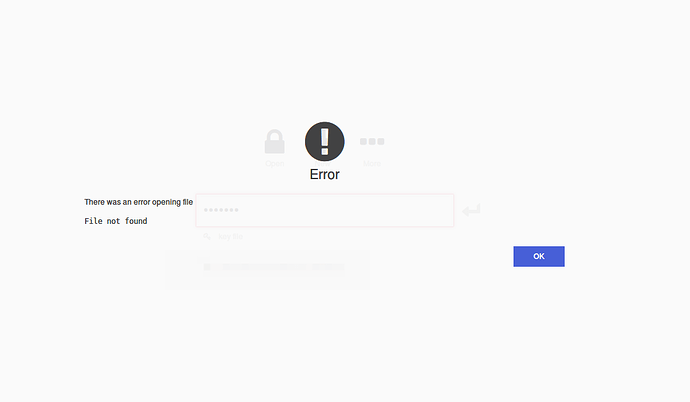

At least then it is your device, not someone else’s, so you have an idea of which crappy software is installed, which updates are missing etc. From what I checked, I got different results depending on the Input Source enabled on my OS.
#Keeweb autotype code
When on the go, better sync your keepass file to your smartphone and use e.g. I verified how the code creates an Applescript and spanws the execution of osascript with it.
#Keeweb autotype password
This is similar with keepass, but again, keeweb is for the use case where this is not your system! Moreover, keepass for windows offers a “secure desktop” where you enter your master password which cannot be accessed by (off-the-shelf) keyloggers, keeweb doesn’t). – the system you use (for example keyloggers can sniff your master password. – the browser you use (especially, keeweb is made for the use case when you are not at your own pc, so this is the browser of someone else, with a bunch of extensions installed and probably outdated). you need to trust the CA-system… or use cert-pinning) – the network connection between your system and the server (man-in-the-middle might replace keeweb with an infected version), or properly setup SSL (i.e. If keeweb is on dropbox, then you need to trust them. – the server that keeweb is stored on (an attacker might replace keeweb with some infected version on the server). If you use keeweb, you additionally need to trust: You need to trust your end devices anyway, as they are the place were you decrypt you keepass database. This means you only need to trust your end devices, not the server. You can secure your keepass file with a key-file that you don’t put into the cloud, making it really really hard for someone to brute-force if he gets access to your cloud storage. The good thing about keepass is that you can sync your passwords across devices through some cloud service like dropbox or owncloud without the need to trust the cloud service.
#Keeweb autotype mods
Now You: Would you use a service like KeeWeb? We all know what Apache httpd and its mods are, but let's talk a little about KeeWeb (Github repo): It's basically written in HTML/CSS and JavaScript, and it's based on KeePass, so you get almost all the features of the KeePass desktop app.

The author promises that the app contains no statistics or analytics scripts or advertisement. Since it is open source, you can audit the code to make sure of that. The remote version of KeeWeb makes no external requests, uses only locally stored data and makes only one network connection to check for updates which users can disable in the app settings. KeeWeb is something that I will keep an eye on definitely to see if creating your own self-hosted version of the application improves or is made clearer on the project website so that anyone with a Dropbox account but no knowledge of scripting or programming languages or Dropbox application creation can set it up on their own. I have no need for that, and won't use a service hosted by a third-party to open my KeePass database either.Ī self-hosted web version of KeePass on the other hand, that is open source, and easy to set up, should have appeal to users of the application. The password isn't edited by Kee, it is done in KeePass.The desktop applications are cross-platform which may have some appeal to users of KeePass. With some sites I can't get the autotype to recognize which password entry to use, and have to manually select it which becomes time consuming every Press J to jump to the feed.

If you click on the hamburger menu icon next to an entry, it gives you three options: Edit, Copy Password and Copy Username. "ghacks") and the extension will list the relevant results to choose from.Ĭlick on an entry (after searching) and it will take you to the corresponding URL. You can type the website's name (for e.g. This is the other option to use if autofill didn't work. You can use the addon's pop-out menu for searching your database. You can also use the browser's right-click context menu to do the same.

It works on most websites, but in case it doesn't, left click on the add-on's button and select "matched login entries". If you're on a webpage that has the same URL as an entry in your database, the username and password fields should be automatically filled by the add-on. Kee Featuresīad puns aside, let's take a look at what the extension is capable of. Auto-fill is of course the main feature of the extension. Does this work with KeePass portable? It does, that's what I use it with. That's it: you've setup Kee and KeePass to work together. Select the latter and login to your database as usual. The welcome screen of the plugin asks you to choose whether you want to create a new database, or use the existing one.


 0 kommentar(er)
0 kommentar(er)
